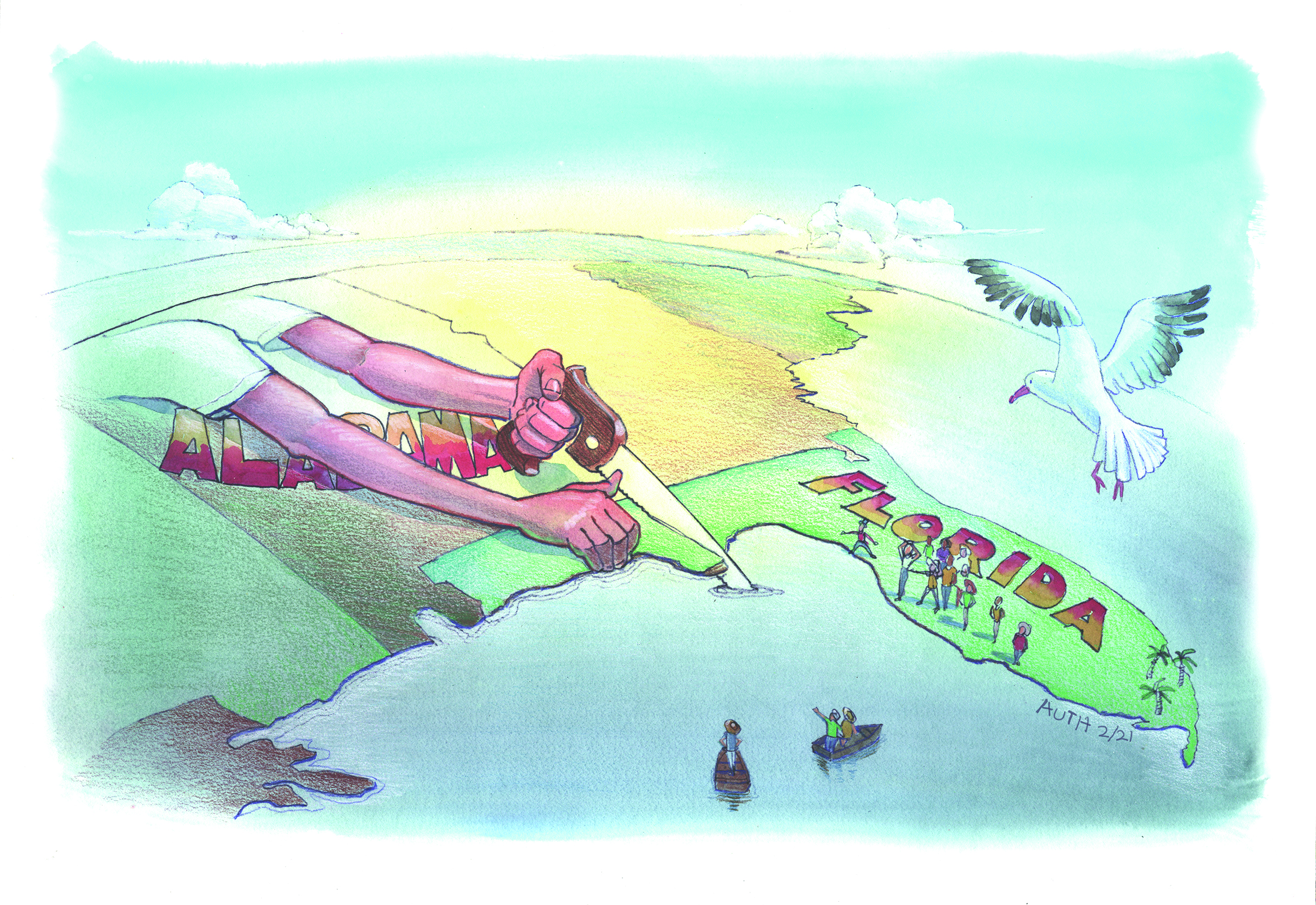
Look at a map.
It doesn’t take a geographer to see how the region known as the “Florida Panhandle” could and should be South Alabama.
Well, it almost was.
Back in January 1901, representatives from the seven Florida counties between the Apalachicola and Perdido Rivers met in Jacksonville, Florida, “for the purpose of considering ways and means of effecting the transfer of (that) territory” to Alabama.
The whole thing was reported in the Atlanta Constitution, which noted that if secession and annexation took place, some 194,000 Floridians would become Alabamians. That would give Alabama a population of 1,928,000, while Florida, or what was left of it, would have been reduced to a paltry 434,165. On top of that, by adding the Panhandle’s 10,000 square miles to Alabama, it would have become the largest, territory-wise, east of the Mississippi!
Apparently sentiment for such a move had been growing in West Florida. A few years earlier, a legislator from Escambia County had drawn up a bill that would allow Panhandle residents to vote on the issue, but East Florida interests killed the plan. Yet the dream did not die. Shortly before the Jacksonville meeting, the Young Men’s Business League of Pensacola passed a resolution favoring annexation and other groups were joining them.
Pro-annexation arguments were simple enough. West Florida had been settled by Alabamians, so family and cultural ties between the two were strong. Trade connections reinforced this kinship, for commerce to and from the region flowed north and south, not east and west. Adding the Florida folks to Alabama would increase the size of Alabama’s congressional delegation, which in turn could do a better job of looking after West Florida’s coastal interests. Pensacola especially liked this, for once the annexation was complete, Alabama’s steel and iron industries would make good use of that city’s harbor.
The article also noted that there were those in East Florida who would be happy enough to let the Panhandle go, evidence of a feeling that fewer Alabamians would mean a better Florida – an early example of the Sunshine State’s look-down-the-nose-at-Alabama attitude that became more pronounced as time went on.
There was also talk that if the Panhandle was sent packing, then the rest of Florida could move the capital out of Tallahassee – “a small town and not likely to become a large one” – to a more central, more promising location.
Meanwhile Alabama interests, aware of the prize that might be theirs, persuaded their legislature to make “an appropriation for the purpose of working up sentiment in the territory affected in favor of annexation” – nothing like fishing in troubled waters.
Then what happened?
Nothing.
Instead of using energy and influence to annex the Panhandle, and all that came with it, Alabama leaders devoted energy and influence to something else.
And today we are left to wonder what might have been.
Ed. note: For an entertaining look at an insider’s history of the Florida-Alabama coast, we recommend Hardy Jackson’s The Rise and Decline of the Redneck Riviera, 2012, University of Georgia Press.





